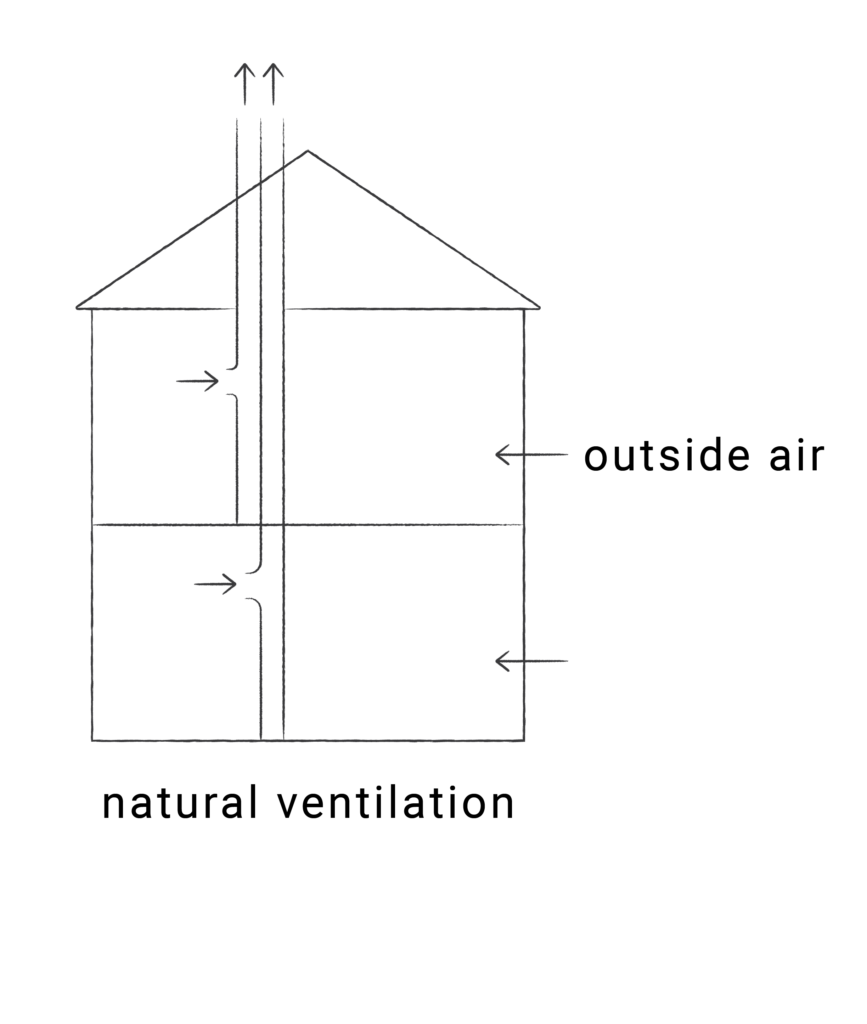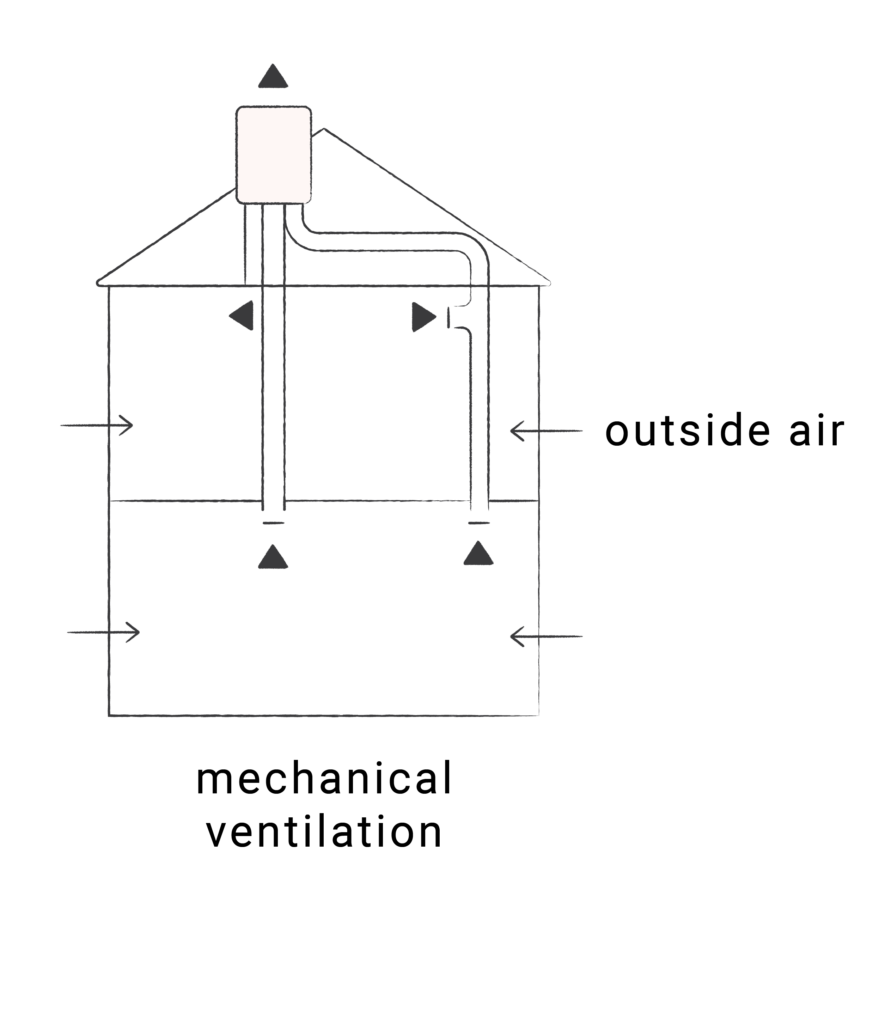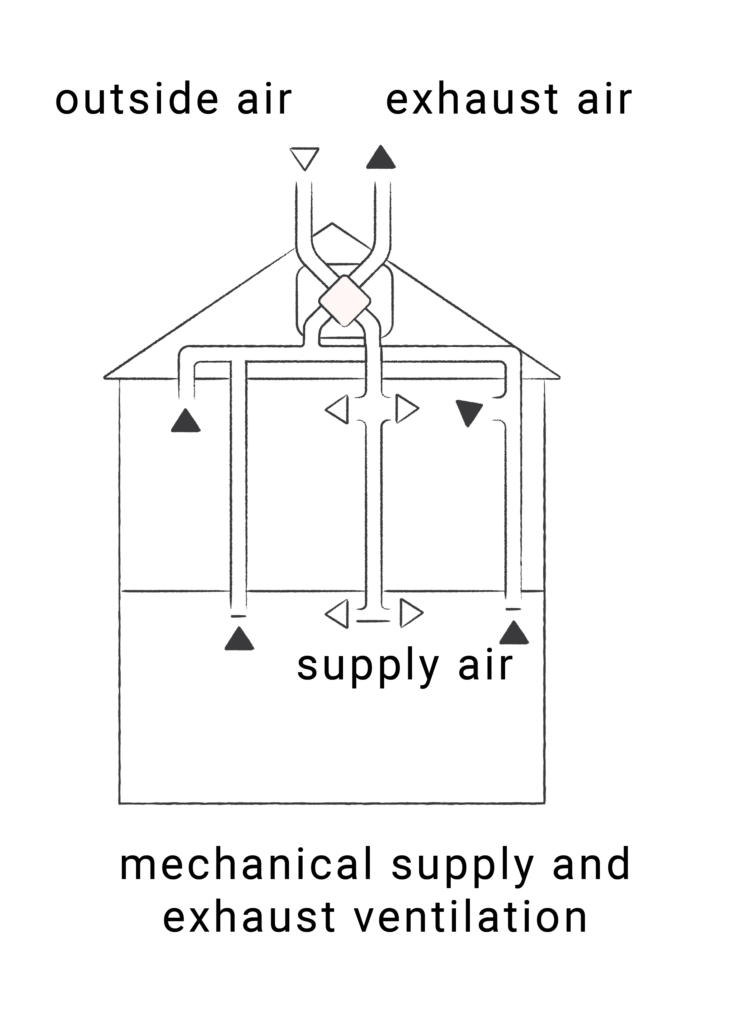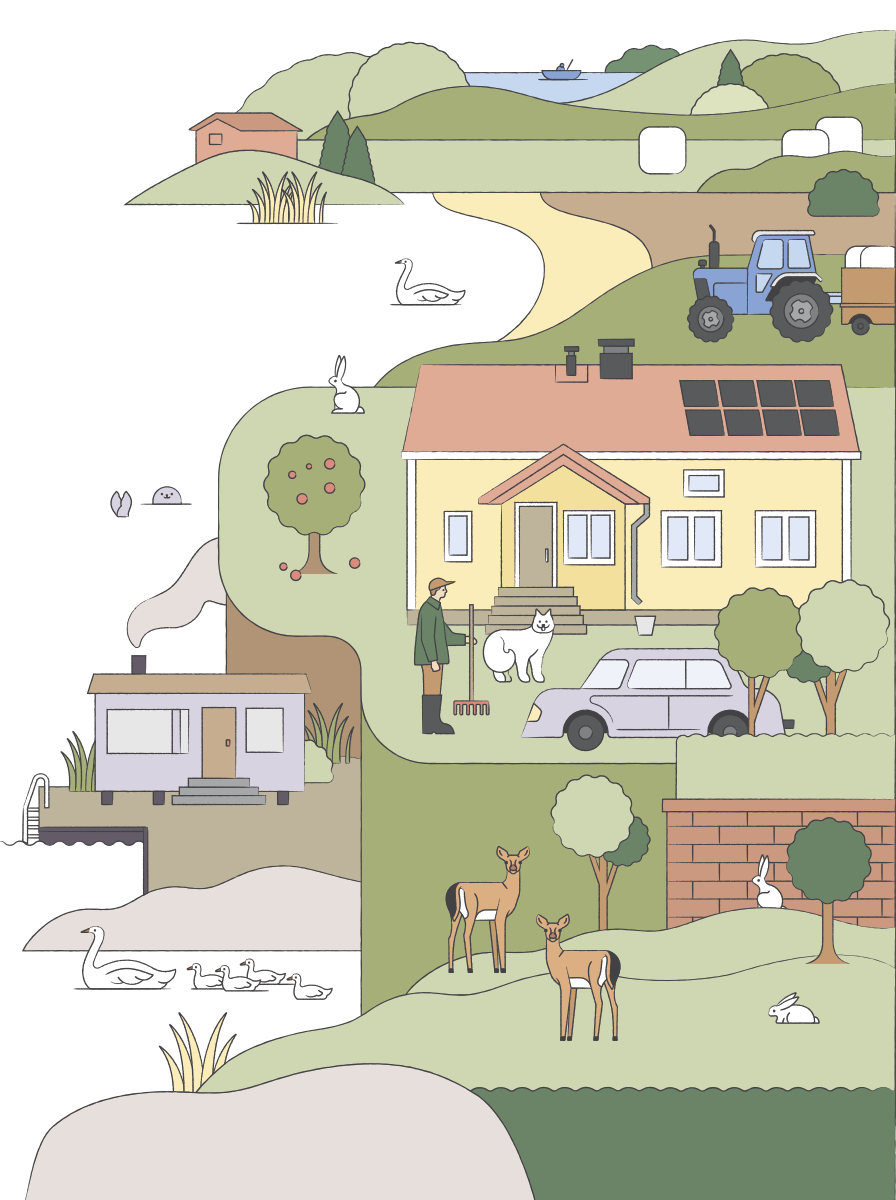Proper ventilation will ensure comfortable and healthy indoor air and prevent problems with dampness as extra humidity will exit the apartment with ventilation. However, 20–40% of indoor heat will escape through ventilation, and the housing company can save up to 5% in operating costs by adjusting and upkeeping the ventilation system. This will also reduce the carbon footprint.
You can save up to 5% in operating costs by adjusting and upkeeping the ventilation system.
Room ventilation is sufficient if an A4 sheet of paper keeps suctioned to the entrance of the exhaust flue and if indoor air does not feel musty. Excessive ventilation will waste energy.
There are many alternative systems that each have their pros and cons. The houses completed before the 1960s often have natural ventilation. In the 1960s and 1970s, mechanical exhaust ventilation prevailed, and since the 1990s, mechanical supply and exhaust ventilation is the most common system.
Mechanical ventilation with heat recovery is the most energy effcient alternative, but applying it in older buildings may cause problems because the negative pressure created by the unit may suction impurities from wall structures into indoor air. It may also be challenging to find space for the air ducts.
Mechanical ventilation consumes electricity, but less than the amount of thermal energy recovered. Old apartment houses with massive structures and natural ventilation are often surprisingly energy efficient.
In naturally ventilated houses, the air ducts should be cleaned and adjusted, and it is a good idea to check that make-up air inlets are not blocked by insulation or wallpaper. For example, supply air inlets may be missing from a typical Finnish detached house built after World War II for the families of soldiers, and they should be added to every room of this house type. If pressure difference is sufficient, a supply air window is an energy efficient alternative.

If the staircase of an old house is made bigger, this may confuse natural ventilation so that dirty air moves from downstairs to upstairs. The use of natural ventilation requires independent initiative (adjusting the vents according to temperature, opening the windows in the summer and so on), but when used correctly, it is a pleasant and quiet solution. The thermal energy escaping with exhaust air can be compensated by adding insulation in other places and by using renewable forms of energy.
The HVAC contractor or chimney sweep may check that the flues work and adjust them and the vents. Ventilation flues must be checked and cleaned regularly. The housing company should create and share a guideline for the residents on how to use and upkeep ventilation.
In mechanical ventilation the unit removes dirty air through the roof and supply air enters the house through inlets in the outer wall. In some houses the inlets are missing and supply air enters through holes by the windows and doors, for example. In terms of energy, mechanical exhaust is the worst solution: the unit consumes electricity and blows out warm indoor air.

Some of the heat in the exhaust air can be recovered with a recovery unit or pump (6s). This heat can be used to heat rooms or water, for example. The kind of supply air window that heats the air in its structure will improve energy efficiency. If windows need to be changed in a mechanically ventilated house, supply air windows are one solution to improve energy efficiency. Noise from outdoors must be taken into consideration in design.
A mechanical supply-exhaust system usually includes heat recovery, or recovery should be added to it. In a heat recovery unit, the warm exhaust air and cool make-up air cross each other in the honeycomb heat exchanger and the heat moves physically from warm air to cold air.
This returns 70–90% of the heat. There is a thin sheet between the air flows so that dirty and clean air do not mix.







